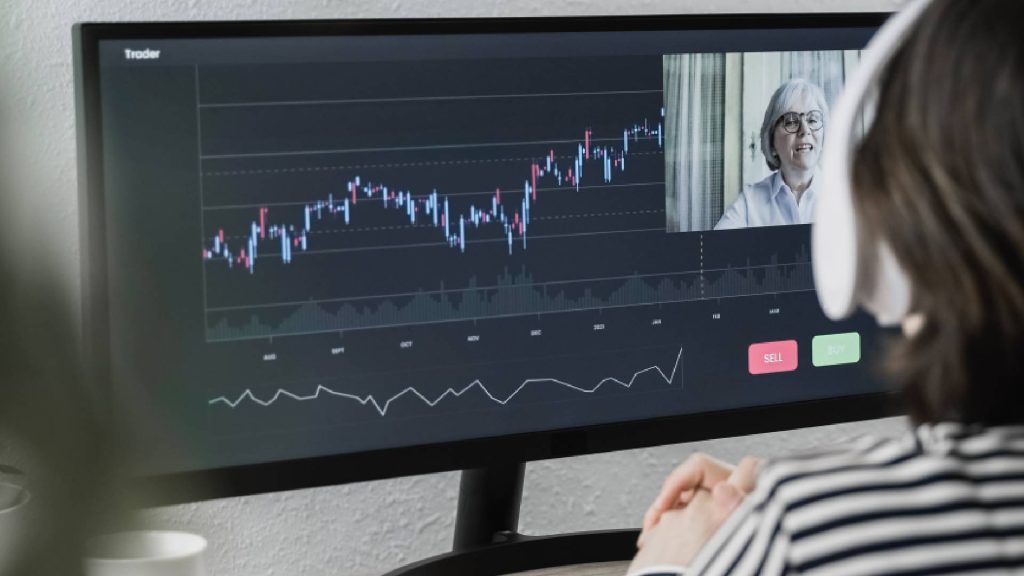The term “volatility” is thrown around a lot when the stock market takes a dive, but what does it mean? The stock market has been on a roller coaster ride recently. It is important to invest in a way that can help you capitalize on the market’s ups and downs. This article explores why volatility is so beneficial and shows investors how to build an investment portfolio that lets them ride the market as it shifts.
What is Volatility?
Volatility is a measure of the price stock or market tends to fluctuate. It is usually expressed as a percentage, and the higher the volatility, the greater the chance that a stock could rise or fall quickly. Since supply and demand will influence the volatility, volatility can be seen as an indicator of the underlying characteristics of supply and demand.
These periods of high economic activity can be referred to as booms and busts. In the boom phase, the market is very active, and data for all trading types are highly valued. This helps traders drive insane levels of profits by creating artificial demand on the weak, or suckers can be made rich by buying low and selling high a few times. In the bust phase, traders see their profits shrink, and there is higher volatility.
As of 2021, the stock market experienced an unprecedented level of volatility, with every asset pricing in the double digits. Lending and aggregating capital become extremely difficult during periods of low volatility as people are more conservative with their money, and many companies closed down. With low market volatility comes a plethora of opportunities; some of the most aggressive companies are in the stock market during the boom and bust phases. Take Atlassian. In 2020, Atlassian hit a P/E ratio of 50 and had increased its market cap over 800 times. This company had a period of high growth, an initial public offering of $1.5 billion (it is now worth over $11 billion ), and astonishingly was valued at more than $30 billion during the 2008 recession.
What causes volatility?
A volatile market is a market in which a lot of trading takes place. This trading is usually based on speculation rather than on any solid information about the market. Volatile markets are caused by a number of different things.
- One of the most common causes is economic release. For example, if the unemployment rate ticks up, it can cause the market to swoon.
- Another common cause is a change in political leadership. For instance, if a new president is elected, this can cause an increase in volatility.
- Some volatility in a stock price may occur when a company releases news about a new product, acquisition, or other significant change within the company. The stock price typically fluctuates with the new information. The more significant the news, the more the stock price typically fluctuates.
A popular initial public offering (IPO), where a company becomes publicly traded, may also contribute to a volatile market. - In this fast-paced, hyper-connected world, overseas factors may attribute to the volatility of the market. When the U.K. surprised the world by voting to leave the European Union, the Dow lost nearly 900 points in the two days following the vote. And it dropped more than 100 points a few hours after North Korea launched a missile over Japan in August 2017.
Ways to Profit in Volatile Markets
Buy and hold
Volatility is a blessing in disguise when it comes to buying quality companies at discount prices. It helps investors rebalance their portfolios into investments they may not have considered when prices were higher. These stocks are purchased and held for an extended period, often many years, to reap the rewards of the company’s incremental growth.
Short-Term Traders
Short-term trading is one of the most popular strategies that pay off in unstable and volatile markets. When volatility spikes, traders have the opportunity to generate an above-average profit, but they can also lose significant amounts of capital in a short period of time. By using stop losses effectively, traders can control risk during periods of strong demand, the key to ensuring profits during these volatile periods.
Ways to manage risk
Diversified investment portfolio
We’ve all heard the saying, “Don’t put all your eggs in one basket.” But it’s that very concept that makes diversification a powerful strategy. Diversification protects your portfolio against downturns or market declines. By spreading your investments among different companies, industries, areas of the world, and asset classes, you can reduce your overall portfolio’s damage when one asset class performs poorly. In other words, you can win some and lose some — but that’s better than losing everything.
Determine your risk tolerance
It is risky to invest. How much risk are you willing to take with your money? No matter what industry you choose, you can face crashes, bear markets, and economic uncertainty. Finding the right balance of risk and reward can be challenging. Do you need a safe and secure investment that generates income now or in the near future? If your goals are short-term, consider lower-risk investments that yield a quick return. For longer-term goals, consider higher-risk investments that have historically outperformed their more-traditional counterparts.
Risk tolerance is often seen as reflecting age, with younger people having more time to recoup losses and therefore an increased willingness to take risks on stocks or stock funds.
If you’re approaching retirement, or already retired, and expect to withdraw from your portfolio within the next few years; your portfolio should be invested mainly in income-generating assets and less in volatile assets such as stocks and short-term bonds. The older you get, your risk tolerance goes down, and your need for liquidity goes up.
Takeaway
Markets can be difficult to predict, and the best investors know that reacting to market volatility can be just as harmful as getting caught off-guard by a sudden downturn. Historically, sticking with your investment plan has outperformed emotionally driven decisions like going to cash amid periods of market turbulence.
The global markets are filled with opportunities. Juno Markets is a stockbroker that lets you trade shares of the world’s largest companies. You can choose to buy and sell Apple, Amazon, or Google — to name a few. With access to everything you need for online trading, Juno Markets gives you the freedom to invest in stocks via smartphone, tablet, or laptop. With low fees and great customer support, this stockbroker is a great place to start your trading journey.




